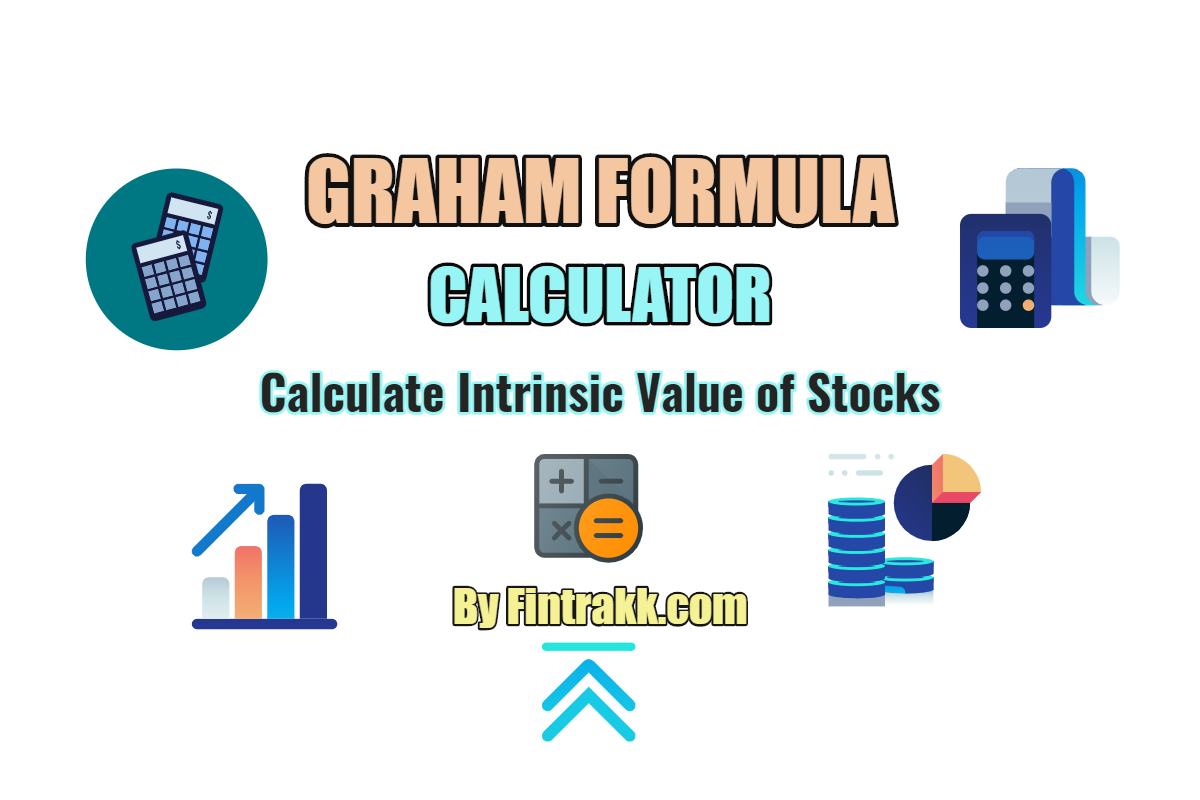Graham formula was proposed by Benjamin Graham for estimating a stock’s fundamental value. It helps you calculate an estimate of the intrinsic value of a stock.
In simplest terms, Graham formula helps identify the underlying value of stock. So, let’s get a better understanding of this easy-to-use, traditional, and important aspect of value investing.
Graham Calculator for Stock Valuation
Before trying hands on any calculator, you must be aware of the formula used to derive those calculations. So, let’s learn the basic formulae and key components used in it.
Original Benjamin Graham Formula
V* = EPS * (8.5 *2g)
or
Graham Formula (Simple) = Earnings per Share x (8.5 + (2 x reasonably expected 7-10 year growth rate))
where
- V = Intrinsic Value
- EPS = Earning Per Share of previous 12 months
- 8.5 = Assumed Fair P/E Ratio of Stock (You can change this to what you think is relevant to present correct P/E of a company)
- g = Future Growth rate for next 7-10 years

Benjamin Graham Formula (Revised)
In 1962 Graham revised the above formula in 1974 to include a multiplying factor i.e. required interest rate of return as follows:
V* = {EPS * (8.5 *2g) x 4.4} Y
or
Graham Formula (Revised) = (Earnings per Share x (8.5 + (2 x reasonably expected 7-10 year growth rate)) x 4.4) / Current Yield on AAA Bonds
where
- V = Intrinsic Value
- EPS = Earning Per Share of previous 12 months
- 8.5 = Assumed Fair P/E Ratio of Stock (You can change this to what you think is relevant to present correct P/E of a company)
- g= Future Growth rate for next 7-10 years
- 4.4 is the average yield of high-grade corporate bonds of the year 1962 when this equation was first introduced
- Y is the current yield on AAA corporate bonds
Did you observe one thing? It’s the same as the original formula! The difference being the multiplication with number 4.4 that Benjamin Graham included as his minimum required rate of return. The reason being, at that time, the risk free interest rate was 4.4% only. In order to adjust it to present rate, we divide the number by today’s corporate bond rate (Y).
Benjamin Graham: The Legendary Investor
You might have heard about the two best-selling books on investing: “The Intelligent Investor” and “Security Analysis”. Benjamin Graham, the father of value investing, known for his thorough financial analysis, the author of these bestselling books was a legendary investor.
An influential investor and the greatest investment analyst inspired people all around the globe. He also acted as a mentor to Warren Buffett, one of the most successful investors in the world.
In his book “The Intelligent Investor” he provided this useful and effective formula for valuation of growth stocks.
Graham Style Formula: Key Takeaway
Graham discovered a wonderful formula to calculate a stock’s intrinsic value. However, keeping in mind the current market scenario and fluctuations, you can build an adjusted formula to test it across different industries and sectors. It may display answers that reflect a higher side. Although, this formula was designed in pre-computer era. But, with certain modifications and realistic growth assumptions, you can get a fair estimate of stock value. In fact, it’s still being widely used and various online calculators have been created based on it.
You may also like: Important Financial Ratios for Stock Investing
Of course, stock screening has become very convenient and sophisticated these days. Don’t you think so? Thanks to the big bunch of modern tools and technological advancements.
Did you try this Graham Calculator or have you used this simple formula to calculate value of a growth stock? Do share your feedback! If you are researching on financial ratios, do try our FREE Current Ratio Calculator and Quick Ratio Calculator as well.